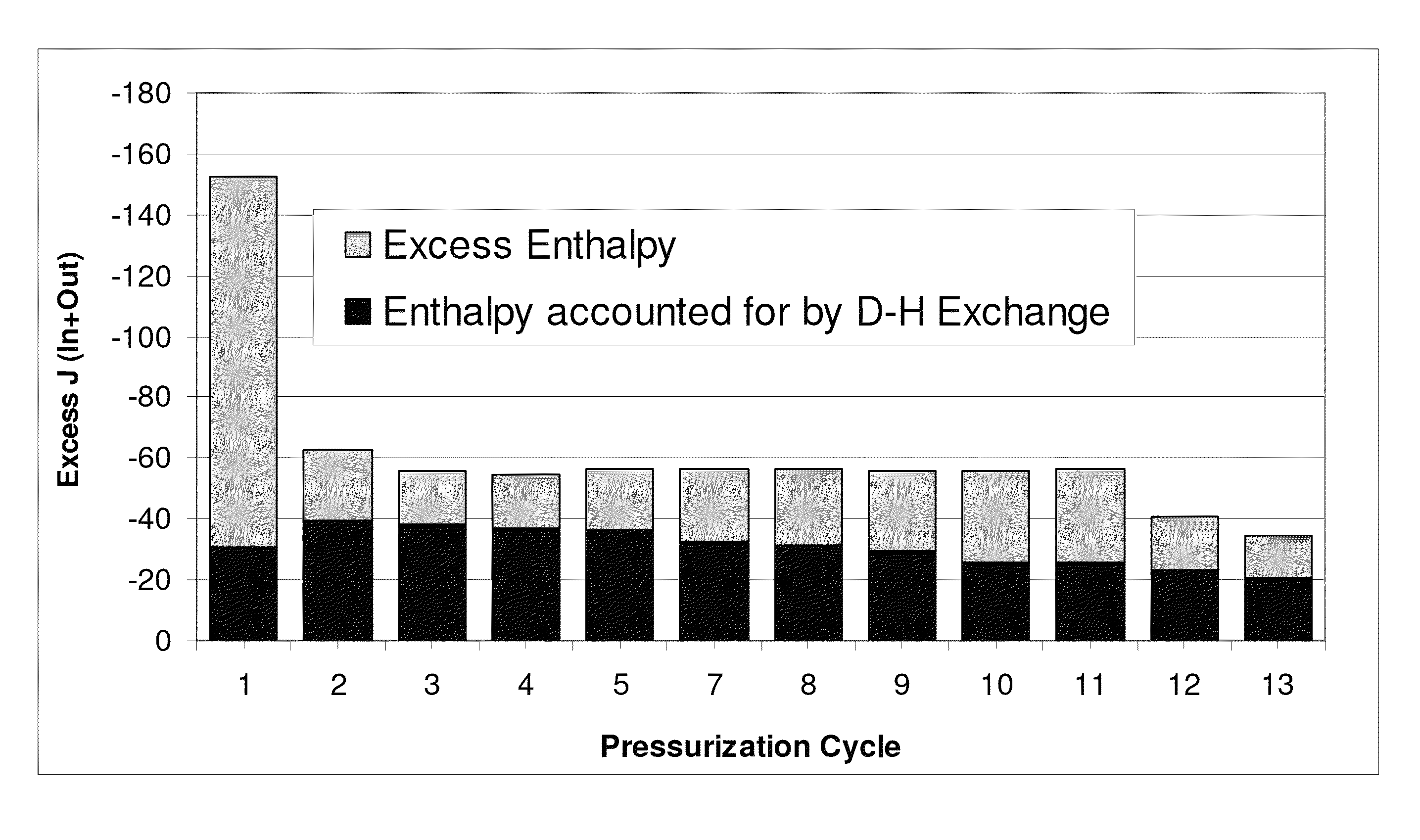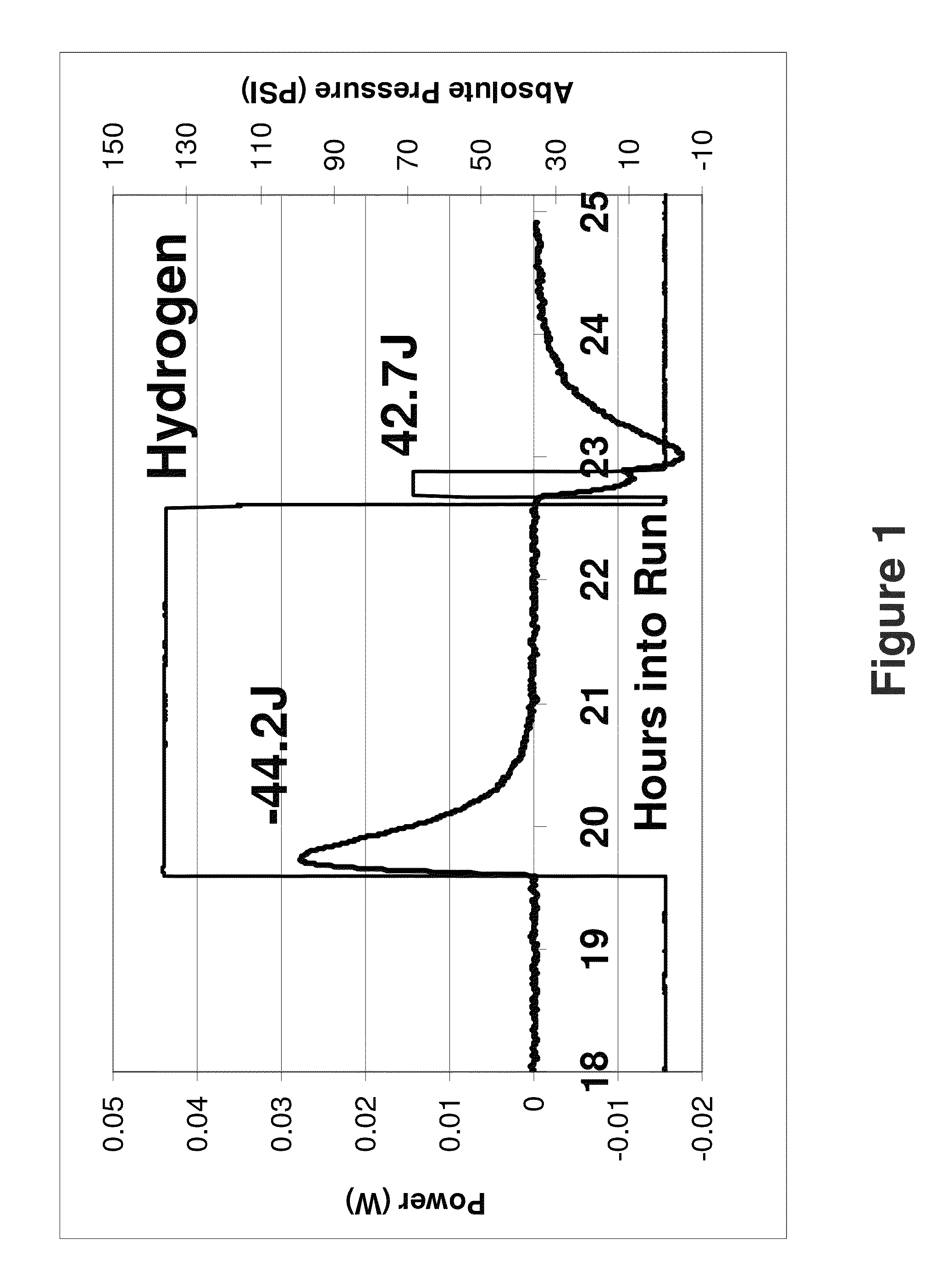Excess enthalpy upon pressurization of nanosized metals with deuterium
a technology of deuterium and nano-metals, which is applied in the direction of material heat development, physical/chemical process catalysts, instruments, etc., can solve the problems of sintering during use, and achieve the effect of reducing sintering and particle growth, and producing excess enthalpy
- Summary
- Abstract
- Description
- Claims
- Application Information
AI Technical Summary
Benefits of technology
Problems solved by technology
Method used
Image
Examples
example 1
Ion Exchange
[0030]Palladium chloride came from several sources but for large scale preparations, it was synthesized by dissolving Suisse 99.95% Pd in aqua regia and evaporating to dryness. The palladium-amine solution was prepared fresh each time by dissolving 1 g PdCl2 in 16 mL of water+4 mL of concentrated HCl and warming. To this deep red solution was slowly added 10 mL of concentrated ammonium hydroxide. A pink precipitate formed that slowly redissolved upon warming to the light yellow tetraamine. More ammonium hydroxide was added until a clear solution was produced. The percentage palladium in the zeolite was based on palladium metal where PdCl2 is assumed to be 60% Pd metal. Zeolite powder (50 g) (Aldrich Molecular Sieves 13×, Cat #283592) was placed in a 500 mL flask with 200 mL of distilled water and the required amount of palladium solution. The flask was refluxed overnight. The zeolite was filtered and washed three times with warm water. The material was air dried overnigh...
example 2
Wet Impregnation
[0031]Alumina (50 g, Fischer Scientific Alumina Adsorption Cat # A-540) was placed in a 500 mL flask and slurried with water. The required amount of palladium solution, as prepared in Example 1, was added and the excess water removed on a RotoVapor system under aspirator pressure and at <60° C. to a semi-dry, flowing powder. This was air dried overnight and then dried at 120° C. for varying lengths of time.
example 3
Wet Impregnation with Molecular Palladium Catalysts
[0032]Zeolite (20 g, Aldrich Molecular sieves, 13×, powder, Cat #283592) was placed in a 500 mL flask and slurried with approximately 100 mL of methylene chloride. 1 g of palladium (II) hexafluoroacetylacetonate (Aldrich Cat#401471, 20% Pd) dissolved in 11 mL of methylene chloride was added. The methylene chloride was removed on a RotoVapor system under aspirator pressure to a flowing powder containing 1% palladium metal. The powder was then dried in an air oven at 120° C. This material when pressurized remained tan in color, indicating that the particles remained very small.
PUM
| Property | Measurement | Unit |
|---|---|---|
| particle size | aaaaa | aaaaa |
| particle size | aaaaa | aaaaa |
| size | aaaaa | aaaaa |
Abstract
Description
Claims
Application Information
 Login to View More
Login to View More - R&D
- Intellectual Property
- Life Sciences
- Materials
- Tech Scout
- Unparalleled Data Quality
- Higher Quality Content
- 60% Fewer Hallucinations
Browse by: Latest US Patents, China's latest patents, Technical Efficacy Thesaurus, Application Domain, Technology Topic, Popular Technical Reports.
© 2025 PatSnap. All rights reserved.Legal|Privacy policy|Modern Slavery Act Transparency Statement|Sitemap|About US| Contact US: help@patsnap.com



